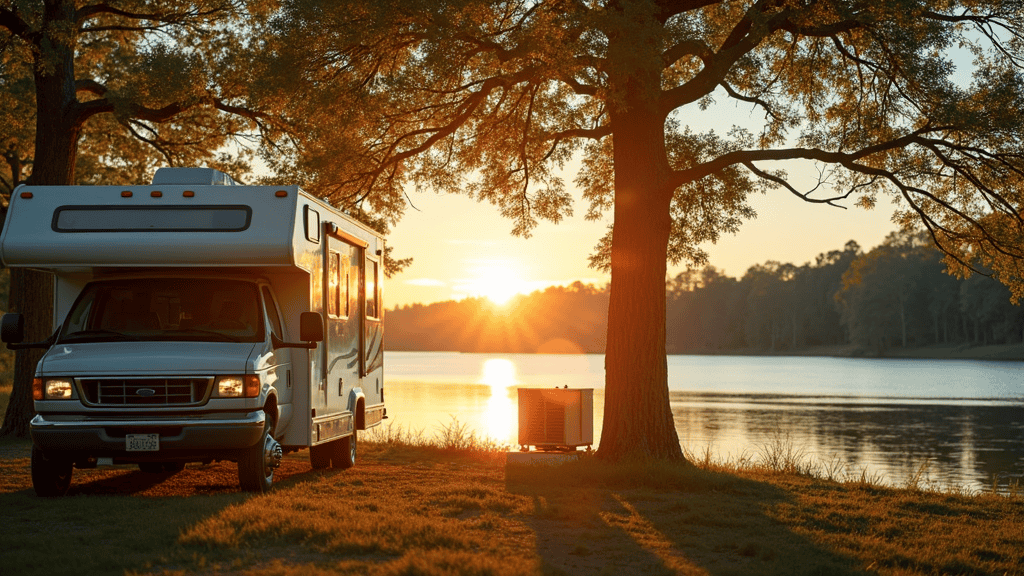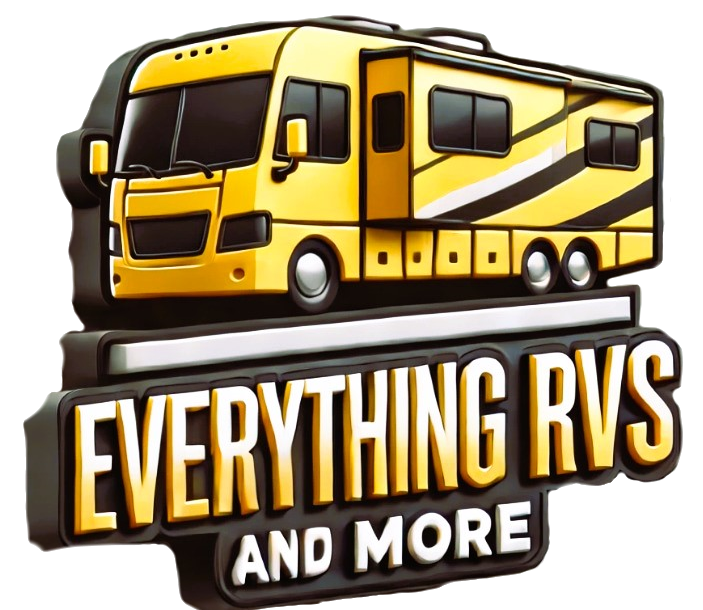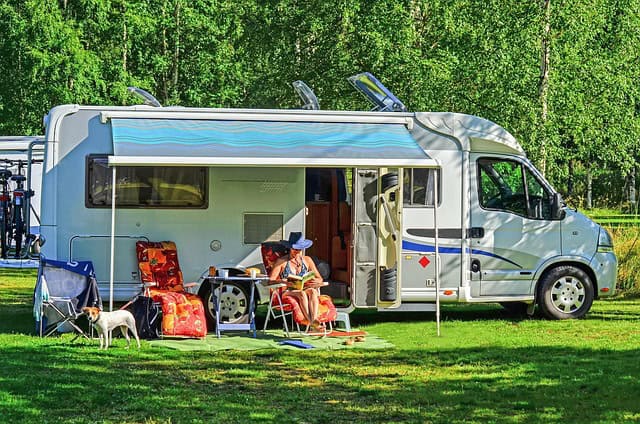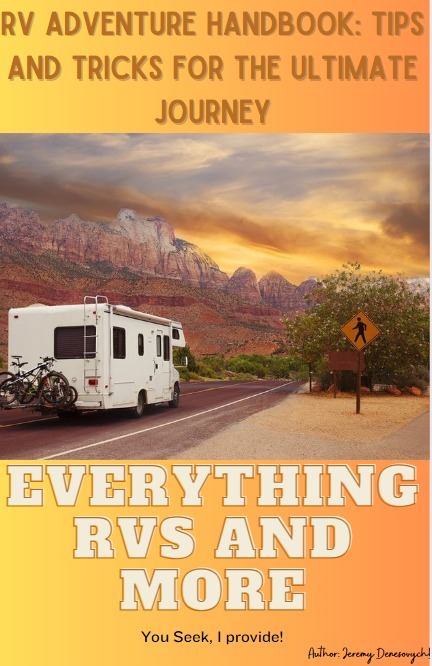Affiliate Disclosure: I earn commissions if you shop through the links below at no additional cost to you.
Last Updated on July 7, 2025 by Jeremy
Hot summer days in an RV can be pretty uncomfortable when you’re not hooked up to shore power or saving energy. I’ve traveled through desert heat and sticky Midwest humidity, so I’ve had to rely on some creative ways to keep my rig livable without always flipping on the air conditioner. These summer RV hacks can help you beat the heat, stay cool, and enjoy your adventures, even when the temps soar.

Why Staying Cool in Your RV Matters
Summer trips are fantastic, but once the sun beats down on your RV, the inside can heat up fast. Mobile homes are more like metal boxes than breezy cabins; heat settles in and stays put if you’re not proactive. Overheating can do more than make you grumpy. It disrupts sleep, puts extra stress on pets and gear, and even risks your health if things get too sweaty.
Many rigs, especially smaller campers and vintage models, weren’t designed with extreme heat in mind. On-grid campgrounds help, but plenty of the best spots, including national parks, BLM land, and lakesides, don’t offer hookups for reliable AC use. Learning how to manage the temperature with practical, no-power hacks is really important if you want to stay comfortable, safe, and ready for some real summer fun.
RVlife blogs, seasoned nomads, and even energy experts suggest that a good ventilation strategy plus using materials that reflect or block heat can lower your indoor temps by several degrees. Even simple tricks can bump your comfort level up without hammering your battery bank or generator.
Understanding RV Heat: Why It Gets So Hot
RVs and camper vans warm up in the same way parked cars do. Sunlight bounces through windows, gets trapped, and bakes everything inside. The insulation in most RVs isn’t always built for blazing summer sun. Large windows, skylights, and thin metal walls soak up solar energy. Dark colored rigs and black rubber roofs heat things up even more, so your home-on-wheels can feel more like an oven than a cozy getaway.
Daytime temps often spike in the early afternoon, peaking through windows and radiating off surfaces hours after sunset. Humidity can also sneak in through leaks or from cooking and showering, making things even more uncomfortable.
- Direct Sunlight: Large windows, especially those facing the sun, cause the inside temperature to climb fast.
- Poor Insulation: Many RVs don’t have the thick insulation you’d find in a sticks-and-bricks home.
- Lack of Shade: Parking in an open spot without shade will turn your rig into a sauna.
Knowing these heat sources helps you prioritize where to put your effort, such as blocking sunlight, boosting airflow, and paying attention to your daily routines.
Easy No-AC Hacks That Really Work
Finding ways to stay cool without blasting the AC has definitely changed the way I travel. Here are my favorite goto hacks that anyone can try, no matter your rig’s setup.
- Reflective Window Covers: These inexpensive reflectix sheets look like metallic bubble wrap. Stick them in the windows when the sun’s up and you’ll notice a real difference in the heat inside. It’s a simple move that blocks loads of radiant energy.
- Maximize Natural Shade: Always look for shady spots before parking, whether under trees, next to hills, or even using another RV as a “blocker” at campgrounds. Natural shade keeps your walls and roof from heating up as much.
- Cross Ventilation: Open windows on opposite sides of your RV for a breeze. I nearly always crack the vent fan or roof vent, then open the window farthest away. You don’t even need wind; this alone can flush hot air out and pull cooler air in once the sun goes down.
- BatteryOperated or 12V Fans: Small fans placed by windows or vents circulate air efficiently. Swivel a fan outward near a roof vent to pull out hot air, or aim one inward on the shady side to draw in cooler air at night.
- RV Awning and Outdoor Mats: Deploy your awning and add outdoor mats to block heat from the entryway, creating a cooler zone at the door.
Using these tricks, I’ve managed to ride out triple-digit days and still get a good night’s sleep in my trailer. It’s all about working with what you have and making small adjustments.
Gear and Upgrades to Beat the Heat
Some upfront investment can help keep things comfortable, especially if you’re taking longer trips. These gadgets and upgrades pay off over many summers:
- Portable Evaporative Coolers (Swamp Coolers): These work in low humidity by blowing air through water soaked pads. I’ve tried the Zero Breeze and a few simple DIY versions. They’re not ice cold but they drop temps a bit in dry climates. Check out this:

Evaporative Air Cooler 4129 CFM with 12.7 Gal Water Tank Portable Swamp Cooler
-
- from:
Vevor
- Window Tint or Film: Permanent window films cut UV rays and help manage solar gain. DIY folks can apply them in an afternoon for big insulation gains, and they add some privacy too.
- Thermal Curtains or Blackout Shades: Upgrading curtains to thicker, silverlined thermal panels makes a huge impact. Blackout roller shades stop glaring morning sun for better sleep and cooler mornings.
- Insulated Vent Pillows: Foam vent pillows fit snugly into ceiling vent openings, trapping cool air during the hottest part of the day.
- LED Lighting: Incandescent bulbs give off more heat than you’d think. Swapping for LED lights not only saves battery power, but also cuts back on heat buildup, especially at night.
Smart Routines for Hot Days on the Road
Your day-to-day habits have a bigger effect on your in-RV temperature than you might think. Making a few changes in your routine brings noticeable relief and makes a real difference:
- Cook Outside: Skip stovetop meals and bakefree desserts on hot days. I use a portable grill, instant pot, or camp stove to keep heat outdoors.
- Limit Hot Water Usage: Hot showers and boiling water ramp up indoor humidity. Try rinsing off with lukewarm or cool water, and use public park showers if available, especially after a hot day hiking.
- Open Up At Night: Once temps drop, open every window and vent to flush out built-up heat. Placing fans in strategic spots speeds up cooling, so you’re ready for bed.
- Keep Doors Closed During the Day: Every time you open the door, hot air rushes in. Try to limit ins and outs when the sun’s strongest, especially around meal times or peak heat.
I learned early that keeping an eye on these habits keeps my rig a lot more comfortable. It also lets me save my battery for things I really need.
Must-Know Challenges and Solutions
Staying cool on the road isn’t always simple. Some common hiccups pop up, but with the right work-arounds, you can tackle most surprises:
- Humidity Inside: Wet towels, dishwashing, and even just breathing add moisture, making things sticky. Use a portable dehumidifier or moisture-absorber packs if you spend time in muggy areas.
- Poor Ventilation: Not every older RV or van has great airflow. Battery powered fans, vent covers you can keep open in the rain, or even adding an extra roof vent all help a lot.
- Pets: Furry friends get hit hard by heat too. Cooling mats, iced water bowls, and keeping walks to early morning or evening really help.
- Sweltering Overnight Lows: In some places, it just doesn’t cool off at night. If I do all the above and still can’t sleep, I use a damp, thin towel over myself with a fan on it. It works surprisingly well for cooling!
Dealing With Stubborn Heat Spots
Some zones, like over the cab or the kitchen area, soak up heat and radiate it for hours. Stick-on foam tiles or RV thermal tape can help, but sometimes you just need to pick a cooler spot to sit or sleep until things chill out. Rotating your living space lets you find the coolest part of your RV, especially in the evenings.
Solar Fans for Passive Cooling
Clip-on solar fans can vent stale air during the day if your RV’s in direct sun. They’re good for small windows or keeping storage compartments aired out, plus they don’t drain your main battery at all.
Recommended Products for Beating the Heat (Based on My Experience)
After years camping everywhere from the Rockies to swampy lakes in July, these products really stand out as super useful and worth packing:
- Reflectix Insulation: Cut to fit windows, vents, and even the shower skylight for instant shade. It’s cheap and portable, making it a favorite tool for beating summer heat.
- Vornado or O2Cool Fans: Powerful, battery efficient, and quiet enough to run all night if you want a breeze while sleeping. These fans do a great job circulating air in small spaces.
- Zero Breeze Mark 2 (for Dry Heat): It’s not the same as a full AC unit, but it does help take the edge off in desert areas where the air is dry and the heat is relentless.
- Frogg Toggs Chilly Pad Towels: Drape these over yourself for a quick cool down after a hot hike or chores around camp. They’re reusable, easy to pack, and incredibly effective.
Frequently Asked Questions
These are things I get asked all the time by fellow campers hoping to keep cool through the summer months:
Question: Can you really keep an RV comfortable without AC in the summer?
Answer: You can be surprisingly comfortable with the right combination of shade, airflow, and blocking sunlight. It’s not always chilly, but it can definitely be pleasant enough for relaxing, sleeping, and enjoying your time.
Question: Are portable 12V fans and coolers safe to run overnight?
Answer: Most 12V fans run efficiently and are safe for overnight use, especially those rated for RVs and camping. Always check your battery draw if you’re boondocking, and test any new device before a big outing.
Question: What’s the best quick fix for sudden heat waves when you’re offgrid?
Answer: I point a fan out the roof vent during the day, put in reflectix window covers, and keep the curtains tightly drawn. Drape a wet towel over your shoulders or use cooling packs if it’s especially rough.
Chasing cooler spots, upgrading your gear, and using simple tricks for airflow can make a big difference. If you have a favorite hack, keep it in your back pocket. Some of the best ideas are ones fellow campers have passed along after sweating out a few summers on the road. Stay cool and enjoy the ride!




.jpg/:/cr=t:5.56%25,l:0%25,w:100%25,h:88.89%25/rs=w:1240,h:620,cg:true)



Leave a Reply